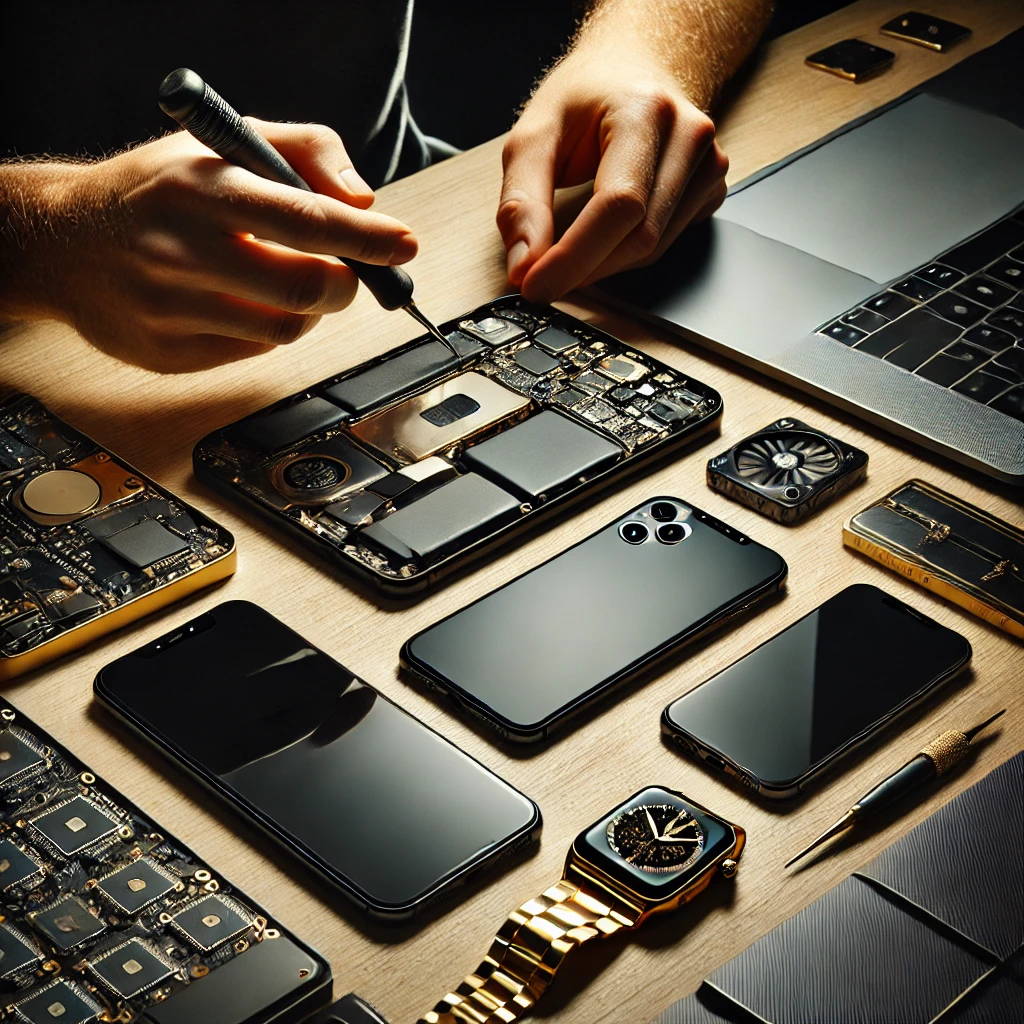Hardware:
Hardware can be categorized based on its function and the type of devices it powers.
Key Categories of Hardware:
-
Input Devices: Hardware that allows users to input data into a computer or other electronic systems.
- Examples: Keyboard, mouse, touchscreen, microphone, camera.
-
Output Devices: Devices that deliver or display the results of processed data.
- Examples: Monitor, printer, speakers, headphones, projector.
-
Processing Devices: These are responsible for processing the data and running applications.
- Central Processing Unit (CPU): The "brain" of the computer that executes instructions.
- Graphics Processing Unit (GPU): Specialized hardware for rendering images, video, and animations, crucial for gaming, video editing, and AI tasks.
- Motherboard: The main circuit board that connects all components and allows them to communicate.
-
Storage Devices: These components store data for future use.
- Hard Disk Drive (HDD): Traditional storage with mechanical parts.
- Solid State Drive (SSD): Faster and more reliable storage with no moving parts.
- RAM (Random Access Memory): Temporary storage that helps your computer run applications smoothly.
-
Networking Hardware: Enables computers and devices to communicate over networks (local or internet).
- Router: Connects devices to the internet.
- Modem: Converts digital signals for internet connectivity.
- Network Interface Card (NIC): Enables a computer to connect to a network.
-
Peripheral Devices: External devices that expand a system's functionality.
- Examples: External hard drives, USB flash drives, scanners, gaming controllers.
Devices:
Devices are built with hardware components but are designed for specific uses. Devices range from simple to complex, depending on their purpose.
Types of Devices:
-
Personal Devices:
- Smartphones: Portable devices combining computing power, communication, and entertainment. They include processors (CPUs), RAM, storage, and high-resolution screens.
- Tablets: Larger-screen devices with similar functions to smartphones but often used for productivity and media consumption.
- Laptops and Desktops: Traditional computing devices with higher processing power, often used for work, gaming, or creative tasks.
-
Wearable Devices:
- Smartwatches: Devices that combine traditional watch functions with computing features like fitness tracking, notifications, and even phone calls.
- Fitness Trackers: Devices specifically designed to monitor health metrics like heart rate, steps, and sleep patterns.
-
Internet of Things (IoT) Devices:
- Smart Home Devices: Products like smart thermostats, security cameras, and smart lights that can be controlled via smartphones or voice assistants.
- Wearable Health Devices: Devices like continuous glucose monitors or smart health bands that collect and analyze medical data in real-time.
- Connected Appliances: Refrigerators, washing machines, and other household devices that are integrated with the internet for smart functionality.
-
Gaming Devices:
- Consoles: Devices like PlayStation, Xbox, and Nintendo Switch designed specifically for gaming, powered by custom processors and GPUs.
- VR/AR Headsets: Virtual reality (VR) and augmented reality (AR) devices like the Oculus Rift, which create immersive experiences.
-
Embedded Systems:
- Microcontrollers and Sensors: Found in cars, industrial machinery, medical devices, and smart gadgets. These systems perform specific tasks within a larger device, like controlling a car's braking system or monitoring temperature in a refrigerator.
Key Innovations in Hardware and Devices:
- Quantum Computing: A new type of hardware architecture that leverages quantum mechanics for vastly more powerful computation than traditional binary computers.
- 5G Connectivity: Devices with 5G capabilities are revolutionizing communication, providing faster internet speeds and supporting more connected devices simultaneously.
- AI and Machine Learning Accelerators: Specialized chips designed to run AI algorithms faster and more efficiently (e.g., Google’s Tensor Processing Units).
- Edge Computing Devices: Hardware designed to process data locally (on the device) rather than relying on cloud servers, improving speed and reducing latency for IoT applications.



Add New Comment